La mattina ci svegliamo in N ’ gorankro, sembra che i ragazzi sono in attesa per noi. La stessa folla come ieri sera è qui, sotto il portico della casa del capo. Noi stiamo prima offerto un caldosecchio d'acqua, una delizia. E una colazione nella sala da pranzo del capo, dove un poster delle atrocità e delle torture sotto Gbagbo è esposto al muro. Con le immagini ... Questo è un sacco di sangue per colazione.
Poi, riprende la discussione. I genitori in cui i ragazzi non hanno mai visto pelle bianca digli di venire a scuotere le nostre mani. Molti sono spaventati e non si può tornare indietro: la folla è così confezionata intorno a noi è difficile sfuggire. Una madre scende la figlia nel mezzo della “ arena bianca ”, e la bambina, rapidamente capire che lei non può sfuggire, nasconde i suoi occhi e grida ad alta voce. La figlia del capo riesce a scalare le sedie e la gente ad andare in giro.

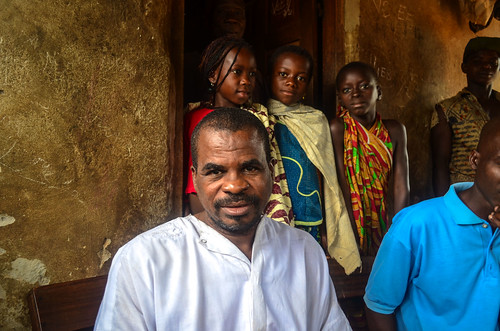
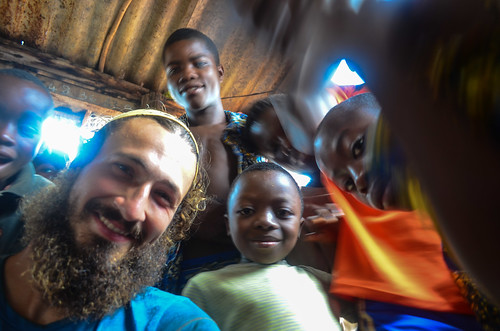
D'altra parte, vedendo le nostre macchine fotografiche, i ragazzi sono attratti e amano mettersi in posa.
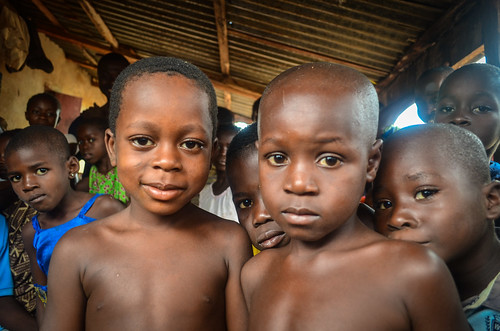


Dopo un addio con i nostri ospiti meravigliosi, strada di Vavoua è un altro 40 chilometri di sabbia piscine pista e acqua. L'opzione più dritta da Kouibly a Vavoua non è sicuramente il più veloce.
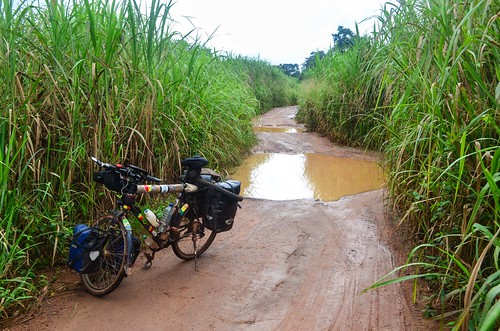
Sulla strada, un uomo bicicletta è gridando “Blanco!“. Non è la stessa “branco!” come in Guinea-Bissau per designare persone bianche, blanco è il nome del vino di palma in Costa d'Avorio. Egli cicli su una vecchia bicicletta arrugginita con una grande tanica gialla sul portapacchi posteriore, distribuendo grandi tazze di vino. La sua è molto meglio di quello che avevo provato in Liberia. A quanto pare, blanco è buono solo nei villaggi come è fresca, e diventa rara (e peggio) nelle città.

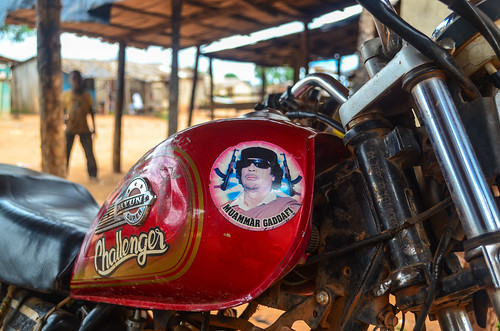
Ci sono ancora molti posti di blocco dell'esercito. Sembrano più presenti in campagna che sulle principali strade asfaltate. C'è chi ci saluta senza fermarci, chi ci chiede la tessera come pretesto per chattare. Hanno detto di aver visto 4 ciclisti passare qui prima.

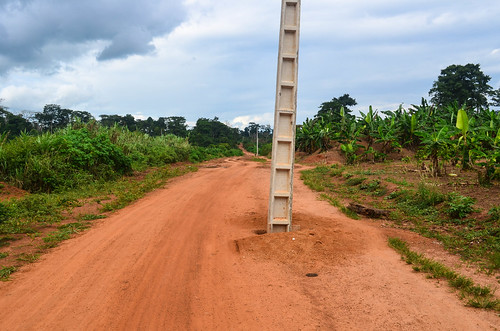
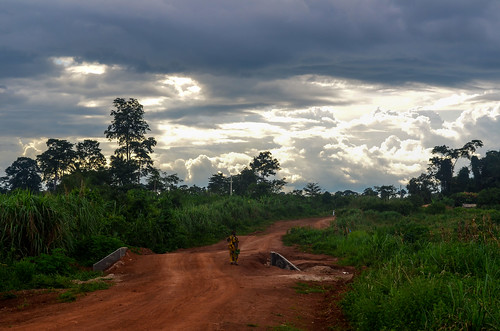

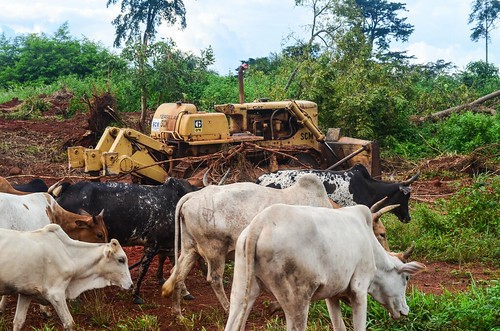
Alla fine della pista, raggiungiamo alla fine Vavoua. Fa un mero 50 chilometri, ma siamo abbastanza stanchi per finirla. Proprio di fronte al municipio, Jacques e il suo arresto nel suo 4 × 4. Egli è un sous-prefetto e ci invita a cena.
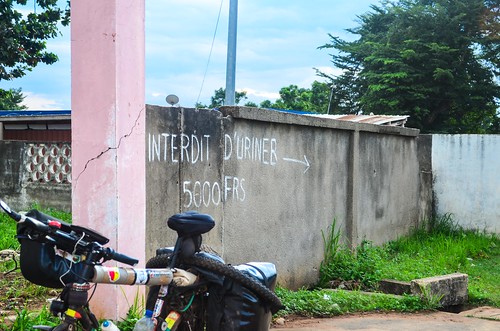
Cucinano il buon cibo e la lunga discussione ci insegna che 2 persone ha ucciso la settimana scorsa nella foresta abbiamo appena attraversato. A quanto pare, nonostante sia una foresta protetta, non c'è alcuna protezione e il disboscamento continua. Alcune persone hanno persino avviato piantagioni all'interno. Le uccisioni erano legate a affari illegali tra burkinabé e ingenti somme di denaro coinvolte. E poiché la foresta è un'area senza legge...
Inoltre, il motivo dei numerosi posti di blocco è perché quando è iniziata la guerra, le armi sono state distribuite senza un vero controllo. Ora è quasi impossibile raccoglierli. E poiché in realtà non c'è paga per l'esercito, è meglio lasciarli fare i loro soldi con posti di blocco/racket casuali sulle strade.
Dice anche che siamo tra i primi civili che vede dopo la guerra, la maggior parte degli stranieri qui sono stati inviati all'interno dell'esercito o dell'ONU.
Dopo un altro buon pranzo con Jacques il giorno dopo partimmo Vavoua.
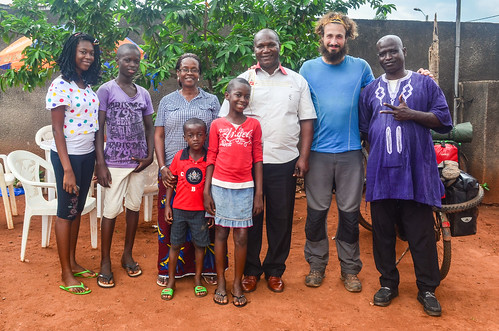
Il clima è piuttosto secco per una stagione delle piogge. Johannes lascia per Daloa mentre continuo su un'altra pista sterrata per Zuenoula. Il paradosso di strada va, così ora che io sono dove le strade e le infrastrutture sono buone, ci si sente quasi noioso a bastone per l'asfalto e fuggo per più tracce di sporcizia. Ma lo scenario è sempre meglio quando la strada davanti a me è rosso e non asfaltata.

Nonostante lasciando nel tardo pomeriggio, faccio quasi 60 chilometri di Zuenoula in pista rossa. Quando la bella luce del tramonto (il mio tempo preferito cavalcare) scompare lentamente, comincio a considerare i villaggi vicini per trascorrere la notte.
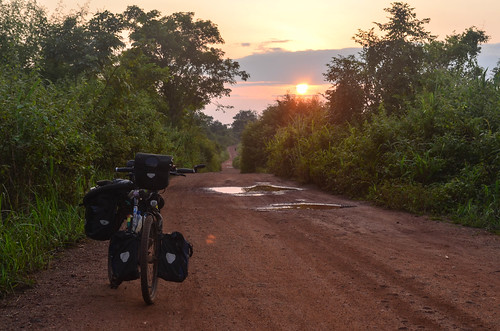
Il primo processo è sbagliato, persone brutalmente mi circondano per chiedere che cosa portare a loro. Proprio quando stavo per dire che ivoriani sono le persone più belle e più interessanti finora. Il secondo processo non è è migliore: il capo sembra ubriaco e le sue prime parole sono per chiedere sigarette. Don ’ t sapere se la domenica è un giorno di bere, o se questa regione non solo è così bella come prima, ma io ’ d piuttosto continuare a Zuenoula e trovare un ostello per la notte. Finisco gli ultimi chilometri di notte con gruppi di motociclisti mi passa velocemente, facendomi fretta delle luci della città. Alla fine, ho gestito un buon media di 15 km/h per 4 ore senza asfalto.
Finalmente farlo lì e sembra raccapricciante: luci basse, poche persone nelle strade grandi e bancarelle di cibo deserta. Nessun sorriso o saluti, così dopo cena mi attengo alla mia stanza d'albergo fino al mattino. Giorno e notte sono due mondi diversi.
Dopo alcune foto di elaborazione in camera mia, lascio per Bouaflé. Non è in tale maniera, e pavimentato, allora dovrebbe essere veloce. È meglio essere rapida, come stavo ancora avvertito di ciclismo di notte su questa strada. Preferisco sempre strade senza traffico, ma quelli sono anche le strade preferite dai ladri.
C'è un altro campo del Bangladesh delle Nazioni Unite all'uscita di Zuenoula e niente molto fino alla fine della giornata. Ho piantagioni tranquille e la mia destra e sinistra fino al Bouaflé.
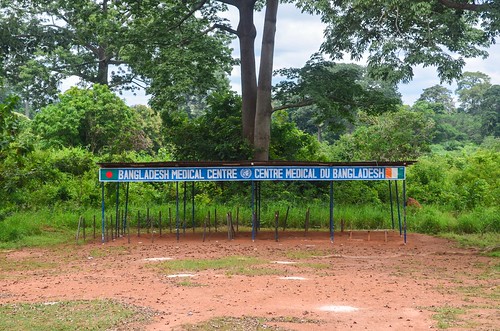

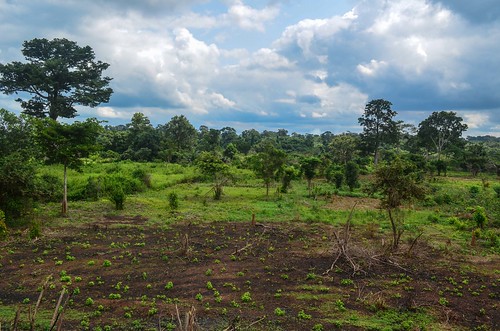
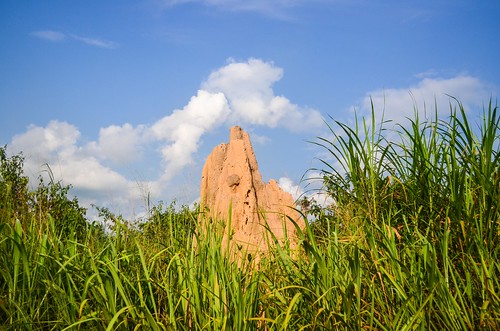

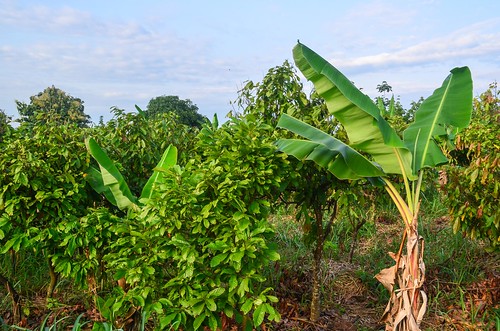
Bouaflé è vivace e sembra che le persone siano di nuovo amichevoli. Faccio nuove amicizie facendomi conoscere il fufu alla banana. Pensavo fosse solo di igname o kassava, ma a quanto pare il vero fufu ivoriano è fatto con le banane (platano). E poiché Jonas lavora presso la fabbrica Solibra di Bouaflé, che imbottiglia la maggior parte delle birre vendute nel paese (Bock, quella nazionale, più le birre su licenza), otteniamo una degustazione e una spiegazione di quale paese beve di più.
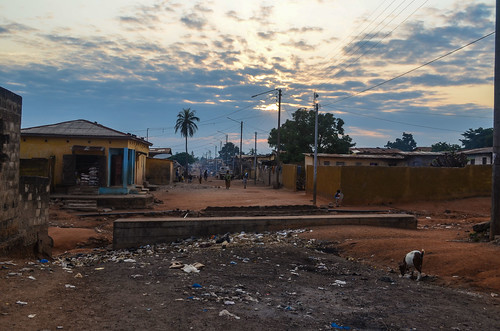
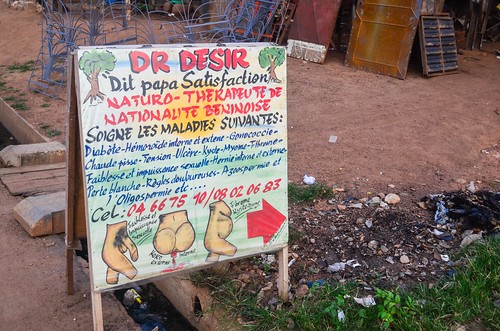
Come le mie gambe erano stanche già dal mattino e sono ancora, ho deciso di ciclo fino a Yamoussoukro, altri 80 km e ci resto per pochi giorni. Un altro raggio rotto e un piatto attiéké e pesci più tardi e sono pronto per la pista sterrata più. Evitare la strada principale della capitale prendendo una più lunga, sterrata e senza traffico, andando oltre la diga di Kossou, quale costruzione formata il lago di Kossou, la più grande della Costa d'Avorio.
La strada è bella (di sicuro preferisco rosso e strade di arance al grigio asfaltate quelle) ma mai arrivare a vedere il lago fino a raggiungere effettivamente esso. La pista rulli sulle colline, su e giù, mai avermi fatto vedere più di un chilometro.

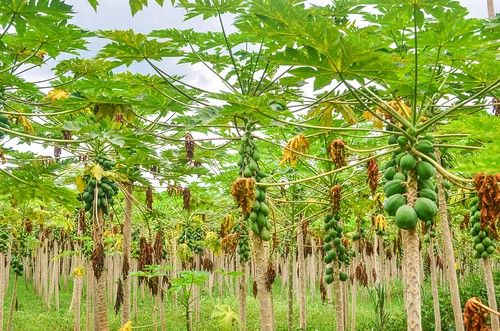
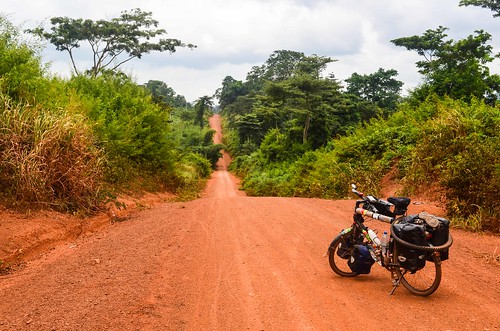
C'è una miniera d'oro appena prima di arrivare alla diga, attualmente fuori servizio. Il lago è appena dopo.
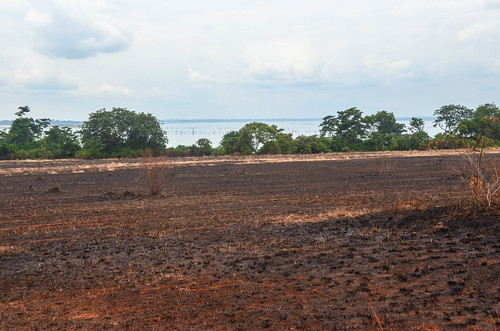
Nelle vicinanze della diga, mentre tiro fuori la macchina fotografica, vengo fermato dalle guardie armate, dell'esercito. Tutte le foto intorno alla diga sono vietate, anche le foto del lago. Per essere sicuro che non ci provi, il capo mi segue in moto lungo tutti i 1500 metri della diga fino a quando non sparisco di vista. La diga, imbottita di grosse pietre, è stata costruita nel 1973 da Impregilo Italia (che sembra abbia costruito molte delle più grandi dighe in Africa) e ha ancora un bell'aspetto. L'unica foto che ho è la veduta aerea sul cartello sulla strada Yamoussoukro-Bouaflé.
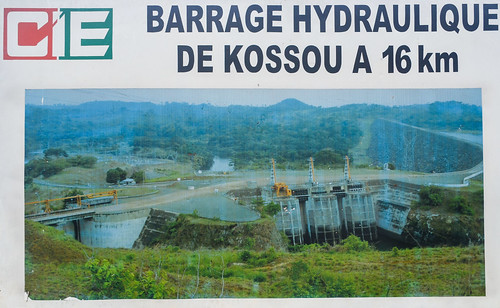
Più di 80.000 abitanti sono stati trasferiti quando il fiume Bandama ha dato vita al lago Kossou, che ha una lunghezza massima di 180 km e una larghezza massima di 45 km. La diga è alta 58 m, larga 235 m alla base e alimenta le turbine da 176 MW (3×60 MW) dell'impianto sulla riva sinistra.

Alla fine della strada è eventless fino a Yamoussoukro. Dovuto frenare durante una discesa per vedere che cosa erano distribuendo le braccia fuori della piantagione della strada: un grosso ratto, appena ucciso nel campo. Solo 1000 CFA (1,5 €) per più carne che c'è su una coscia di pollo.

So quando sto per entrare a Yamoussoukro quando vedo la cupola della basilica sopra gli alberi, più di 7 chilometri più avanti. La strada per la capitale non ha un traffico folle come in una vera capitale, poiché questa deve essere rimasta ad Abidjan, come le ambasciate e le fabbriche. Yamoussoukro è una capitale fantasma, con ampie corsie ma senza traffico.
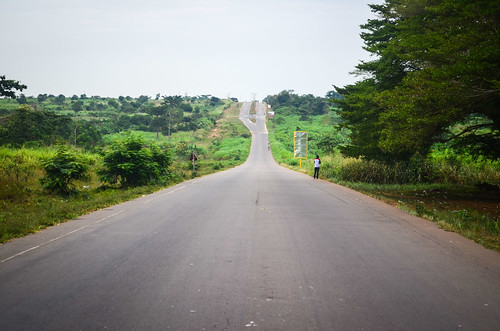
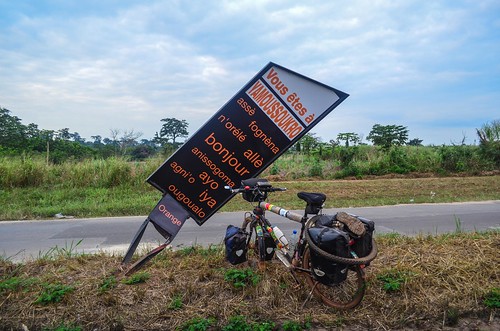
Così, l'ingresso in città è molto piacevole: corsie molto grande e nessuno su di esso. Il parcheggio della Basilica è vuoto. È ancora pochi chilometri per raggiungere il centro adeguato.
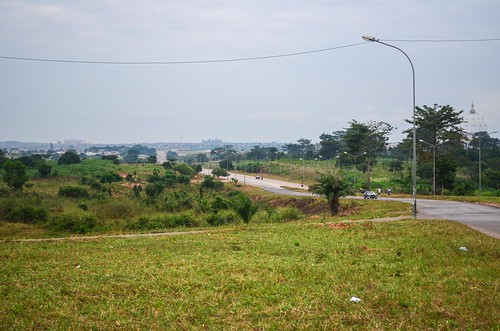
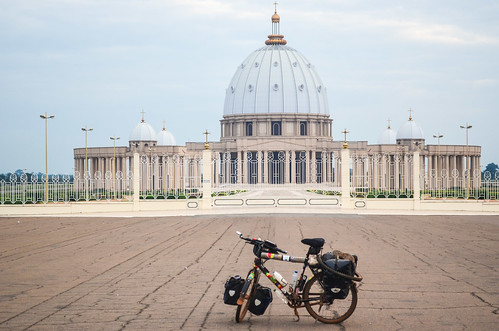
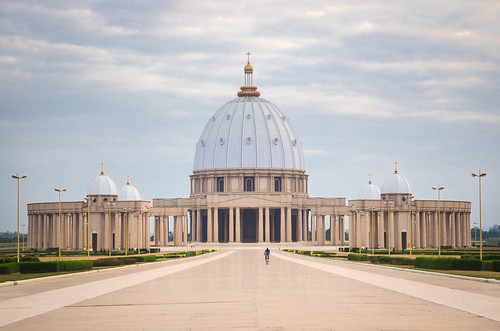
Una volta in centro, proprio lì si trova il palazzo presidenziale e il lago dei caimani. La città, e tutto ciò che c'è al suo interno, è stata costruita dal primo presidente del paese, Félix Houphouët-Boigny. Aveva dei caimani nel lago del palazzo presidenziale, che si trova appena fuori le mura. Mi è stato detto che dalla sua morte nel 1993, i caimani non sono stati nutriti correttamente. Di conseguenza, hanno mangiato il custode, hanno mangiato il secondo custode e anche un giovane che stava cercando di recuperare il suo cellulare caduto nel lago.
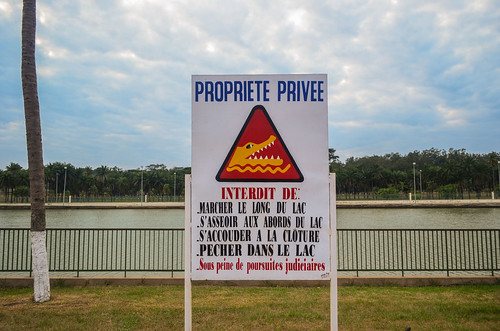
Ora, il lago è recintato e i cartelli vietano alle menti curiose di avvicinarsi troppo o di rimanere troppo a lungo. Sono appena andato a dare un'occhiata per vedere se quei caimani sono davvero ...
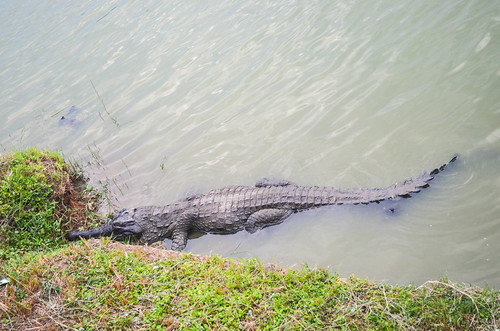
Yamoussoukro è chiamata la città delle luci. “È come Parigi", avevo sentito. Dicono che Yamoussoukro abbia 10.000 lampioni.
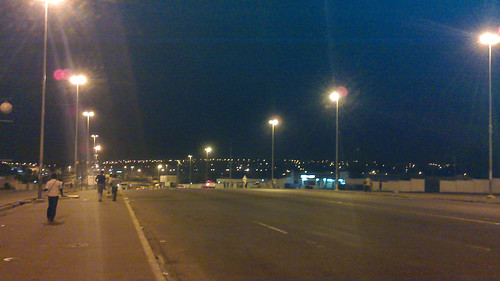
I soggiorni in centro piacevole, solo vivace zona, all'interno di troppe bancarelle di cibo e senza traffico pazzesco a tutti. Potrebbe essere una cosa come Parigi … il pane e i dolci. Dopo il suo pane degustazione come una brioche dolce e Liberia, sono tornato a vero pane, baguette, uvetta aux dolori, ecc.







Ciao JB,
Sperando che tu stia bene, le tue belle foto mi hanno comunque riportato alla vita 🙂 in Africa, visto che sei già in Costa d'Avorio, ti ricordo che puoi cercare Traboulsi anche lì e troverai i miei cugini ma anche più sicuramente puoi cercare questo ragazzo Husein Shakaroun (attività fotografica), e gli dici che conosci Marwan Traboulsi, Non lo vedo da 23 anni, ma vedo cosa succede 🙂
Ti auguro il meglio e come sempre abbi cura di te!
Marwan
Non sono sceso fino ad Abidjan e sono rimasto nella parte centrale del paese... Hai la famiglia ancora più a sud tra il Camerun e la Namibia?